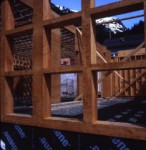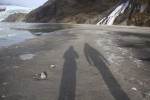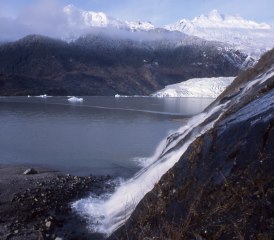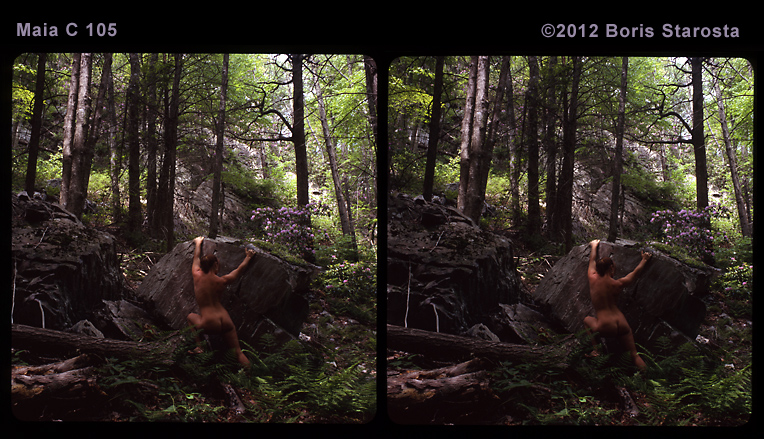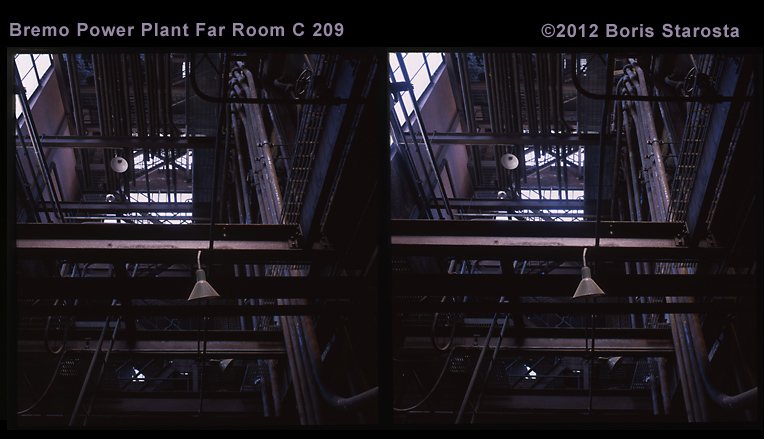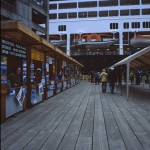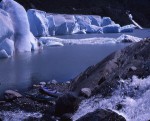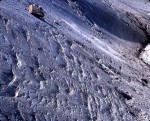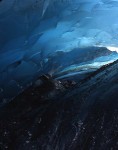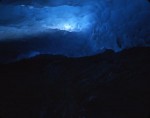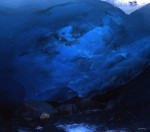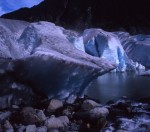The winter ice has been terrible at the Mendenhall Glacier this year. The combination of snow, rain, and avalanches has meant I haven’t ventured near it, much less tried to cross it to get new winter images of the glacier. These two views from 2008 (captured with my TL120-55) will have to suffice. The area of ice pictured here is now long gone. In the summer it is open water. In the winter, it is lake ice.
Not Too Close
This image is taken about a mile and quarter across the lake from where I laced on my skates. Because of the current lake level, 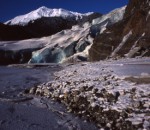 there is a patch of stable, rocky beach here. Because of cliff and creeks, it isn’t possible to walk around the lake to get to this bit of beach. Crossing the lake is the only way. Everything off that bit of beach is in flux and subject to change at any moment.
there is a patch of stable, rocky beach here. Because of cliff and creeks, it isn’t possible to walk around the lake to get to this bit of beach. Crossing the lake is the only way. Everything off that bit of beach is in flux and subject to change at any moment.
The cracks parallel to the shore show that the lake ice has sunk, and may again. The white froth beside the green glacier is a flowing and frozen waterfall. There is another stream coming down closer to the camera. Both are flowing under the ice, taking relative warmth, and creating areas of thinner lake ice. The glacier is calving from above and below, even in winter. Because of all this, approaching the glacier is a dance with an uncertain beast. I hunt for images and capture them as I approach, never certain when I’ll decide I’ve gone close enough and its time to retreat.
This image was made early in the morning’s dance. The colors and textures beckoned me closer despite the poor ice conditions.
Plowing Prow
Closer (and farther to the left) than the previous one, I captured this image. My exploration is stymied. The lake ice has been broken and refrozen several times, 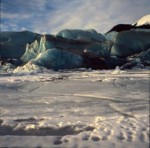 and there is water between the farther cracks. The advancing glacier has plowed up the lake ice like I might my driveway. Farther back there are pieces of lake ice resting 10′ out of the water, having been lifted there by the rising glacier. The textures in the ice in front of me still beckon, but I declare the dance done and retreat.
and there is water between the farther cracks. The advancing glacier has plowed up the lake ice like I might my driveway. Farther back there are pieces of lake ice resting 10′ out of the water, having been lifted there by the rising glacier. The textures in the ice in front of me still beckon, but I declare the dance done and retreat.
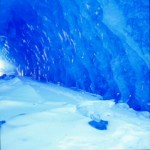 This is a different kind of ice shot. This is a glacier segment which has calved, floated out into the lake, and been trapped in the lake ice when winter arrived. We skated out to the trapped bergs, before shedding our skates to investigate. It was at least 15′ from the surface of the lake to the tunnel roof.
This is a different kind of ice shot. This is a glacier segment which has calved, floated out into the lake, and been trapped in the lake ice when winter arrived. We skated out to the trapped bergs, before shedding our skates to investigate. It was at least 15′ from the surface of the lake to the tunnel roof.